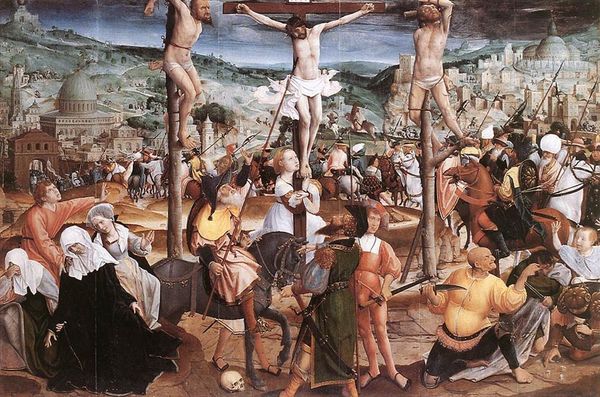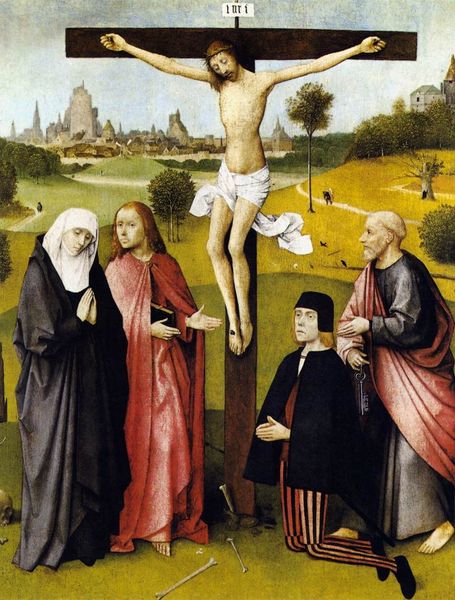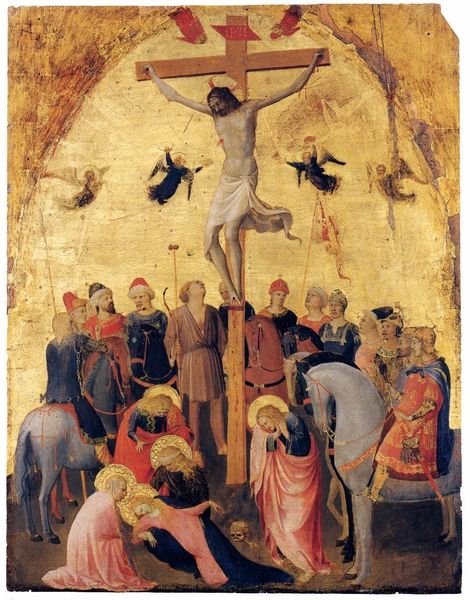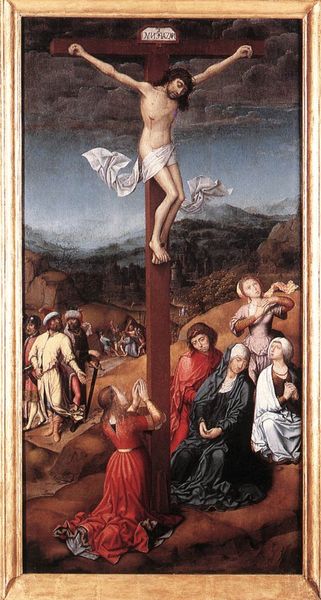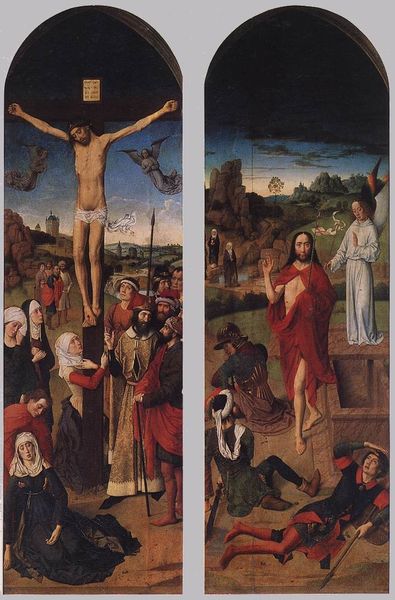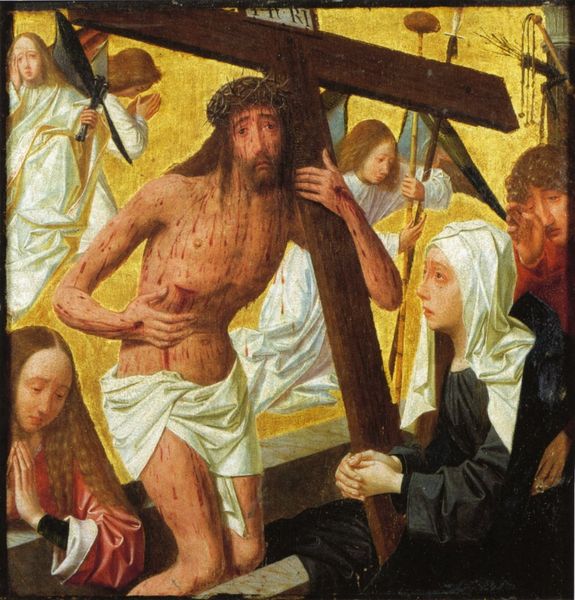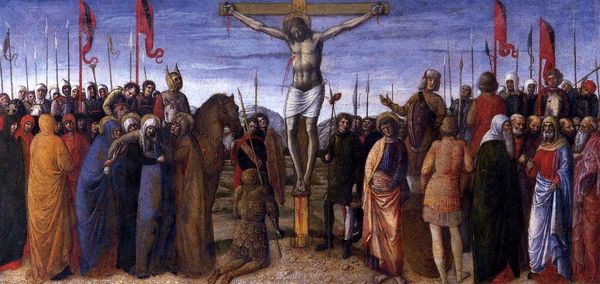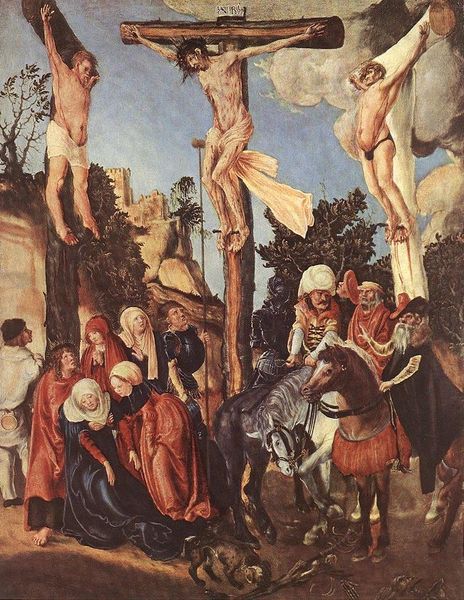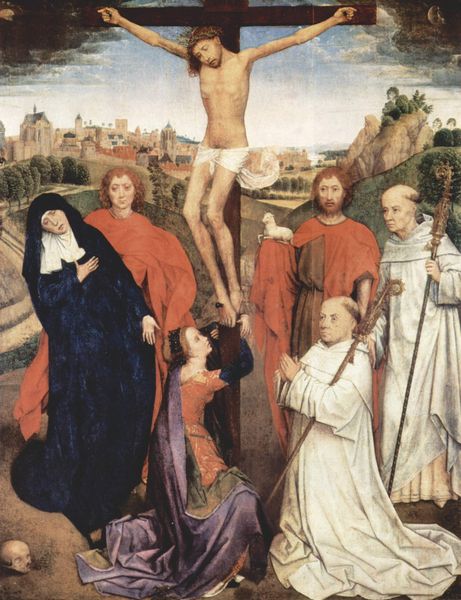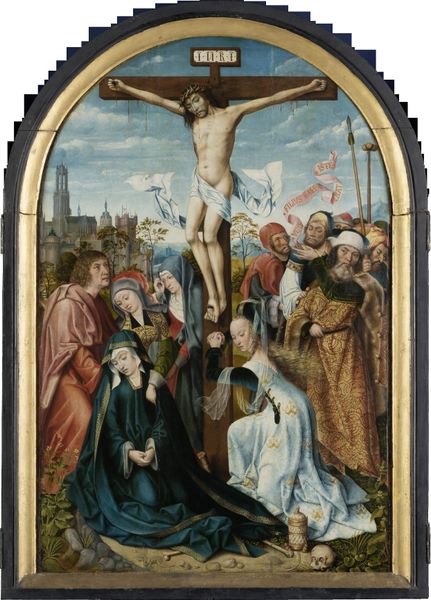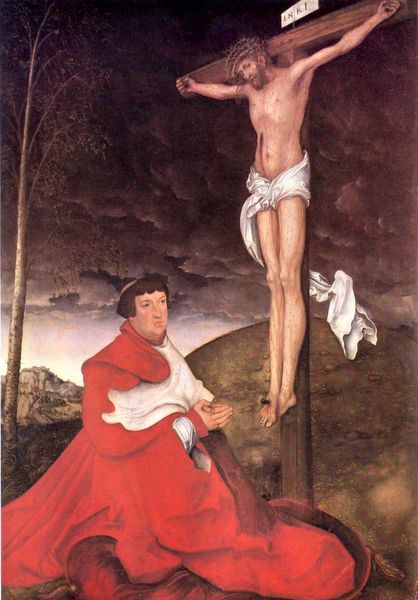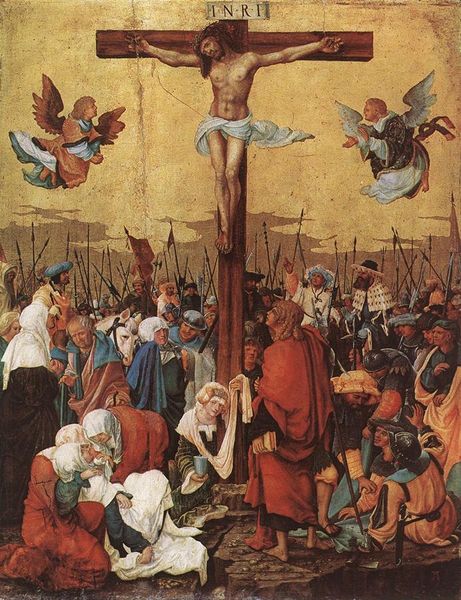
painting, oil-paint
#
narrative-art
#
painting
#
oil-paint
#
figuration
#
oil painting
#
jesus-christ
#
christianity
#
crucifixion
#
history-painting
#
italian-renaissance
#
christ
Dimensions: 88 x 56 cm
Copyright: Public domain
Curator: We are looking at Gerard David's “The Crucifixion,” an oil painting dating back to around 1475. It’s currently housed at the Thyssen-Bornemisza Museum in Madrid. Editor: Immediately, the emotional density strikes me. There's such a contrast in how the figures are arranged, a juxtaposition that speaks volumes. The muted grief of those on the left set against the volatile gestures on the right is incredibly stark. Curator: Precisely. David utilizes compositional tension to amplify the narrative. Notice how the eye is drawn upward from the mourning figures, a study in grief mimed through bowed heads and covered faces. Then, our gaze collides with the gesticulating crowd, their actions echoing chaos. Editor: And beyond the figures, even the backdrop itself is telling. The clear sky over Christ contrasts sharply with the cloudy unease settling over the cityscape—almost like mirroring the moral states depicted within the figures. Curator: Good point. Further, the color palette contributes greatly to the overall effect, wouldn’t you agree? The subdued colors worn by the women, emphasizing solemnity, act as a formal contrast to the more vivid clothing of those mocking Jesus' suffering, perhaps highlighting an intentional imbalance. Editor: The figures, as representations of broader society and moral failings, are heavy with established symbolic meanings. Dogs often appear during crucifixion scenes, and here there is a stray nibbling on a bone next to the bones on the floor as an act of disrespect for death. Curator: Intriguing interpretation! And what does it all amount to from an Iconographer's perspective? Editor: To me, it’s a deep dive into human duality. How societal structures, rendered visually here, teeter between suffering and indifference, reverence and mockery. These enduring motifs remind us how powerfully embedded such visual tropes have become in our collective memory. Curator: Ultimately, "The Crucifixion" functions beyond a religious depiction. David’s structured composition and stark contrasts weave a commentary on human behavior—it's complex emotional rendering through accessible visual rhetoric, for certain. Editor: Exactly, by emphasizing symbolism and contrasting scenes, the image provides an opportunity for the viewer to reflect and project a personal narrative from a timeless event.
Comments
No comments
Be the first to comment and join the conversation on the ultimate creative platform.
